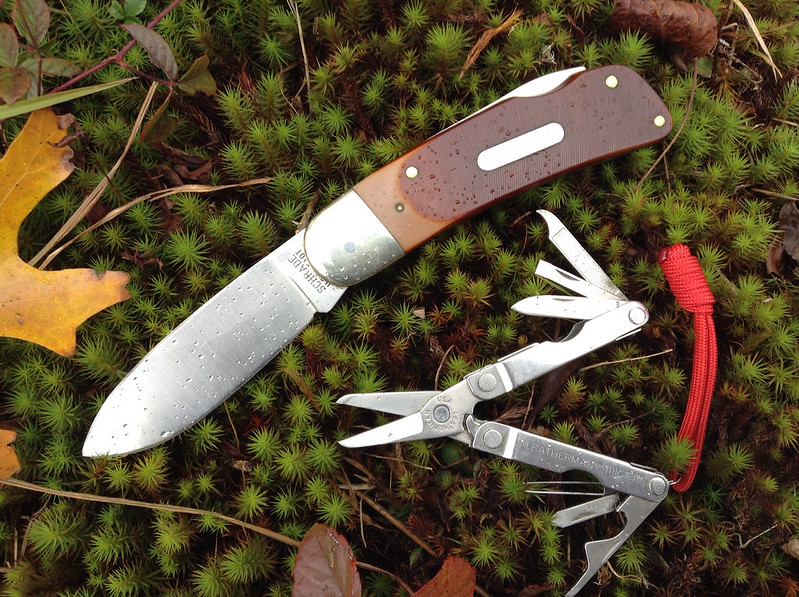It sure looks like a standard grind to me. Just like all the other standard 110's.
Information I found regarding definition of a flat grind
Flat grind — The blade tapers all the way from the spine to the edge from both sides. A lot of metal is removed from the blade and is thus more difficult to grind, one factor that limits its commercial use. It sacrifices edge durability in favor of more sharpness. A true, flat ground knife having only a single bevel is somewhat of a rarity.
Badhammer's knife in the pictures at the top of this page does not look like a flat grind to me.
Picture #2 is a flat grind.
I think that picture is very helpful but there's one aspect of it that I think is misleading.
[Caveat: blade grind terminology is fluid and disputed. Apologies if this causes disagreement.]
#5 is (often) called a compound grind. It shows a shallow primary grind at a shallow angle and a steeper secondary grind to form the cutting edge or bevel. When I think or talk about blades, I distinguish between the the grind and the edge.
On some blades, the grind *IS* the edge. If you sharpen a carpenter's plane or chisel, that is a pure chisel grind (#4). The grind extends at the same angle all the way to the apex. Another pure grind is the so-called Scandi grind like on sees on a stock Mora (#3). This is like a double sided chisel (#4) grind and the idea is that you sharpen it by placing the full primary grind flat on the stone, sharpening the full face of it flat to the cutting edge. In theory, no distinction between the blade grind and the cutting edge. Point YouTube towards "Ray Mears knife sharpening" for a (stuffy) demonstration.
In practice, I've never seen a pure or full hollow (#1), full flat (#2), full scandi (#3) or full convex (#6). In practice, nearly all knives I've seen, used and handled have a compound profile more like #5 with a noticeable difference between the high shallow grind angle and the lower, steeper edge angle.
The Buck 2000 hollow grind is really a combination of #1 and #5 (as it should be). This new "flat" grind on this (beautiful) new 110 appears to be a high sabre/scandi (#3) with noticeable edge bevel (more like #5).
Here is an old Schrade 51OT "Pocket Buster" with a flat grind. Notice that it does not have a shoulder near the spine like the copper 110 does (the copper 110 is more of a high sabre/scandi). Also notice that the 51OT pictured has noticeable edge grind that is steeper than the blade grind. Advocates or a pure full flat grind (as pictured in #2) would say this blade is not a pure full flat grind, since the blade grind doesn't extend to the cutting edge.
 Schrade 51OT
Schrade 51OT by
Pinnah, on Flickr
FWIW, I think "pure" grinds, as pictured in that graphic end up producing cutting edges that are too thin and too frail for actual use, which is why my Bucks (hollow, #1), my Schrade (flat, #2), my Mora and old Schrade fixed blades (scandi/sabre #3) and Opinels (convex, #6) all have a more acute and more durable cutting edge (#5).
Hope something here is of help


